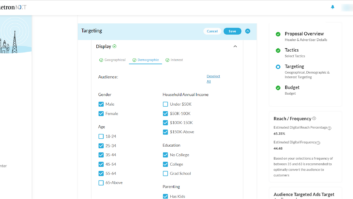Billing and collections
Sep 1, 2001 12:00 PM, By Mark Krieger, CBT
A few issues back we talked about bookkeeping basics and how a variety of inexpensive software packages will keep track of your business’ receivables and generate invoices and statements. Most of these packages also provide features for flagging accounts past due and for generating customized reports. While these programs are great labor savers, they are designed around some basic rules that apply to the use of palm pilots and ledger books.
By setting up a regular billing cycle and establishing payment terms up front, problem collections should be minimized.

First, establish a regular billing cycle and stick to it. How often you choose to generate invoices and review receivables is up to you. All hours, materials and expenses should be recorded on a daily basis, as memories tend to fog, and receipts have a habit of getting misplaced. At the end of each billing cycle, it’s time to review the books, generate invoices and get them out promptly. Statements should be handled on a monthly basis. In many cases, this means using snail mail, although some businesses will accept fax or email invoices by prior arrangement. In any case, it is imperative that all billing and statements go out as quickly as possible.
Second, be sure to record all payments the day they’re received. You may also want to record postmark dates, and refer back to them if a payment appears to be past due. This is one way to ensure fairness to all clients and to avoid embarrassment or ill feelings resulting from record errors.
Payment terms
The issue of payment terms is interesting. Over the years, I’ve heard some independent contractors tell stories of how they would leave an invoice at the jobsite after performing their services and that their terms specified they were payable at time of receipt. I remember one tower contractor telling me that if payment in full wasn’t presented to him on site at the completion of work, he’d send his crew back up to begin dismantling the structure.
Whether or not you believe such anecdotes, the inescapable fact is that we live in an easy-credit world in which most clients have come to expect net 30-day payment terms. Of course, where written contracts are involved, you have the right to explicitly specify payment policies, thus rendering them legally enforceable. Even so, you are the one who needs to negotiate these matters directly with your clients, and you risk losing return business if your terms seem too restrictive.
One way of dealing with the 30-day dilemma is to divide scheduled projects that involve substantial time and materials from routine maintenance or emergency calls. Allow the regular or emergency billings to proceed on a net 30-day basis, but set up a specific payment schedule on project contracts. Such an arrangement might specify one third of the total quotation up front (after the contract is executed and work is to begin), another third when work is approximately 50 percent completed, with the balance payable upon completion of the work. This provides for only one third of the receivable to be carried beyond the project completion.
Past due accounts and collections
Inevitably, every small business has to deal with the occasional client that fails to pay his bill in a timely fashion. To begin with, be sure to issue statements to all clients with an outstanding balance at the end of each billing statement. If the account is past due, add a neutral statement to that effect along with a request to contact you regarding any questions about the account balance. If an account goes one billing cycle beyond the past due statement, call the client with notebook in hand. Ask if there was a problem with your services or if there were any other issues the client needed to discuss. Be friendly but firm, and try to get some sort of payment commitment. Record the time, date and contact information as well as the disposition of the call. You may need these records later. Follow up on these contacts on a regular basis (no less than weekly) until all issues are resolved.
If, after all your best efforts, a client fails to meet his obligations, you have several options. First, you can have an attorney draft a simple letter relating the account history and requesting payment. Expect to pay a modest fee for this service ranging up to about $100. Another route is to retain a collection service. These agencies usually work on a commission based on a percentage of the total collection, but most have a minimum limit for the collection amount. In cases where the debt is small, you might consider filing personally for a judgment in small claims court. Rules on the upper limit of such claims will vary from state to state. Of course, a lawyer can handle this as well.
These are drastic measures, to be sure, and are generally considered as a last resort when no further business relationship is anticipated or desired. In those cases where you wish to preserve a relationship with a problem client, you may elect to carry his balance at a fixed monthly interest rate, or you may simply write off the unpaid balance as bad debt.
Occasionally, you may find a cash-poor client who wishes to barter or trade with you for services rendered. While taking trade is better than no payment at all, approach such deals with caution.
Finally, treat all your clients with dignity and consistency. Remember that checks do get misplaced, invoices misfiled, and that sometimes the till is just empty at the end of the month. By being flexible, professional and persistent, you’ll frequently collect both payments and respect.
Mark Krieger, BE Radio’s consultant on contract engineering, is based in Cleveland.












